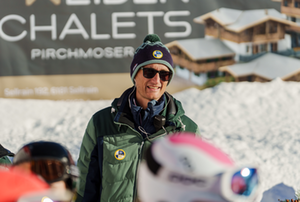With the FIL Natural Track Luge World Cup 2024/2025, an era has quite literally come to an end: five outstanding athletes—Evelin Lanthaler (ITA), Tina Unterberger (AUT), Patrick Pigneter (ITA), Michael Scheikl (AUT), and Florian Clara (ITA)—have concluded their sporting careers. The Director of Sport and Technology, Andreas Castiglioni, reflects on the past season.

Andreas Castiglioni, Director of Sport and Technology Natural Track Luge
Berchtesgaden (FIL/12.03.2025) – The World Championship season began with the double World Cup event in Winterleiten (AUT) from 20–22 December 2024. Nine weeks later, the grand finale took place in Deutschnofen/Nova Ponente (ITA) on 22–23 February 2025. The highlight of the season was the World Championships in Kühtai (AUT) in mid-January 2025.
FIL: How do you assess the sporting and organisational aspects of the 2024/2025 season?
Andreas Castiglioni: “Well, with the World Cup and Junior World Cup, plus the World Championships and Junior European Championships, we had 13 races on the calendar—and all 13 went ahead as planned. That is truly remarkable: there were no cancellations or postponements. Of course, luck with the weather played a part, but it also shows that as FIL, we can rely on the organisers, who are becoming increasingly professional.”
FIL: From a sporting perspective, what stands out from this past World Cup winter?
Castiglioni: “Natural track luge is alive and thriving. This winter, we had two first-time winners—Florian Clara and Stefan Federer (SUI). Michael Scheikl was crowned World Champion in the singles for the first time, and Clara won the overall title for the first time as well. There were also first-time winners in the Junior World Cup, and in the doubles event at the European Championships, Slovakia won its first-ever gold medal. In that sense, the season was truly extraordinary.“
FIL: However, there are still areas for improvement…
Castiglioni: “Of course. Just as the athletes strive to improve, we as FIL must also get better every year. We need to ensure that every race is once again broadcast via livestream, as the TV footage later picked up by broadcasters and sports platforms allows us to reach a large audience. Another key goal is to find new venues outside Italy and Austria.”
FIL: At the start of the season, athletes from 13 nations competed, but by the end, only nine nations remained. Why?
Castiglioni: “Smaller nations often struggle to compete for the entire season. Thanks to the FIL support group, training, races, and logistics are covered. However, if a young athlete needs to return to university for exams, a nation may suddenly be missing from the list. In some cases, we also need to ensure continuity—it's unfortunate when athletes are only nominated by their national federation for a few races.”
FIL: With the season finale, some of the most successful luge athletes have retired. It was an emotional farewell…
Castiglioni: “Absolutely. These athletes have shaped natural track luge for over 15 years and broken records. There is no doubt that an era has ended, and we clearly saw that at the final race—fans came to watch these exceptional athletes one last time.”
FIL: What does the future hold?
Castiglioni: “In the men’s singles, the young guns have already made a name for themselves. We can expect an internal battle between teammates Fabian Brunner (ITA), Daniel Gruber (ITA), and Alex Oberhofer (ITA), with Fabian Achenrainer (AUT) and the Slovenians also in the mix. In the women’s singles, the competition will be much closer, with the Italian athletes likely to challenge Vice World Champion Riccarda Ruetz (AUT), and hopefully, Lisa Walch (GER) will also be a contender. In the doubles, we will see Maximilian Pichler/Nico Edlinger (AUT), Matthias Lambacher/Peter Lambacher (ITA), and Tobias Paur/Andreas Hofer (ITA) battling for the top spot. In short, the pool of potential winners is growing everywhere.”
FIL: Thank you for the interview.









